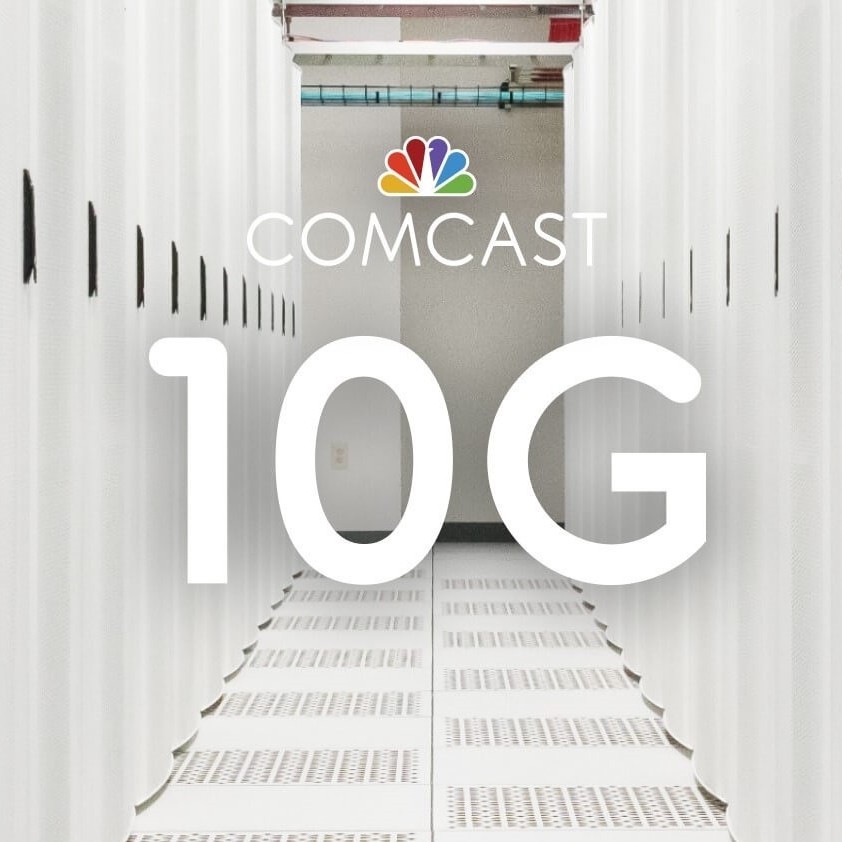Trial of 'live' network pumping out symmetrical, multi-gigabit speeds arrives ahead of Comcast's plan to start launching DOCSIS 4.0 services in the second half of 2023.

Comcast said it has completed its first "live" DOCSIS 4.0 trial in the Philadelphia area, setting the cable operator up to start launching symmetrical, multi-gigabit services in the second half of 2023.
That work ties into a broader "10G" cable industry initiative that envisions symmetrical 10Gbit/s speeds, along with enhanced security and low-latency capabilities, delivered on multiple access network technologies – hybrid fiber/coax (HFC), fiber-to-the-premises (FTTP) and, potentially, wireless.
Comcast said the Philly trial featured a DOCSIS 4.0-based 10G node and multiple cable modems and utilized the Full Duplex DOCSIS (FDX) option for D4.0. Comcast used it to test symmetrical speeds over the connection and will continue to run tests over the next several months in preparation for next year's launch.
Figure 1:  (Source: Comcast)
(Source: Comcast)
As announced in September, Comcast intends to introduce symmetrical, multi-gig speeds in some markets in 2023, and extend that capability to more than 50 million homes and businesses before the end of 2025.
"This live trial combines years of technology innovation and versatility to create a clear path to next-generation speed, reliability and performance for all the homes in our footprint, not just a select few," Charlie Herrin, president of technology, product, experience at Comcast Cable, said in a statement.
Comcast will look to "refine and harden our 10G technology" as the company prepares to make it available to customers in the years ahead, added Elad Nafshi, Comcast's EVP and chief network officer.
Upgrade plans and costs
In addition to going with a mid-split that will expand the amount of capacity dedicated to the upstream to a range of 5MHz-85MHz (up from a legacy range of 5MHz-45MHz), Comcast expects to lean on the FDX flavor of DOCSIS 4.0, which envisions HFC built to 1.2GHz and the use of an FDX band that allows downstream and upstream traffic to run in the same swath of spectrum.
By comparison, the Extended Spectrum DOCSIS (ESD) option for D4.0 being explored by other operators envisions HFC built to 1.8GHz while keeping upstream and downstream traffic separate.
A critical component for Comcast's approach moving forward is the FDX Amplifier, an emerging product that will allow Comcast to deploy FDX across most of its HFC plant and not just to areas where fiber has been pulled relatively close to the home.
Figure 2:  CommScope showed a prototype FDX Amplifier at the recent SCTE Cable-Tec Expo event in Philadelphia.
CommScope showed a prototype FDX Amplifier at the recent SCTE Cable-Tec Expo event in Philadelphia.
(Source: Jeff Baumgartner/Light Reading)
The new amps, not used in the aforementioned trial, will ensure that Comcast does not have to limit its deployment of FDX to networks that use a node-plus-zero (N+0) architecture – networks that have pulled fiber close enough to the home that amplifiers are not needed. With the FDX Amplifier, a product that bakes in echo-cancellation techniques needed to operate an FDX band, Comcast is in a position to deploy FDX to HFC networks that have as many as six amplifiers (N+6) cascading from the node.
Comcast already has a pretty good feel on how much it will cost to upgrade its vast HFC network to DOCSIS 4.0.
Speaking at an investor event last month, Nafshi estimated that the "all-in" cost of the network upgrade, which includes an upstream-enhancing "mid-split," will come in around $200 per home passed. That estimate, which doesn't include the cost of new D4.0 customer premises equipment (CPE), falls well below the typical cost of $1,000 per household passed for a full FTTP upgrade.
Back-of-the-napkin math suggests that Comcast's network upgrade will cost roughly $10 billion to reach that 50 million home target, and up to $12.22 billion based on the 61.14 million homes and businesses passed by Comcast at the end of Q3 2022.
Related posts:
— Jeff Baumgartner, Senior Editor, Light Reading
About the Author(s)
You May Also Like











